Dunedin Public Art Gallery
Another New Zealand first as we explore the Dunedin Public Art Gallery, Aotearoa’s first public art collection.
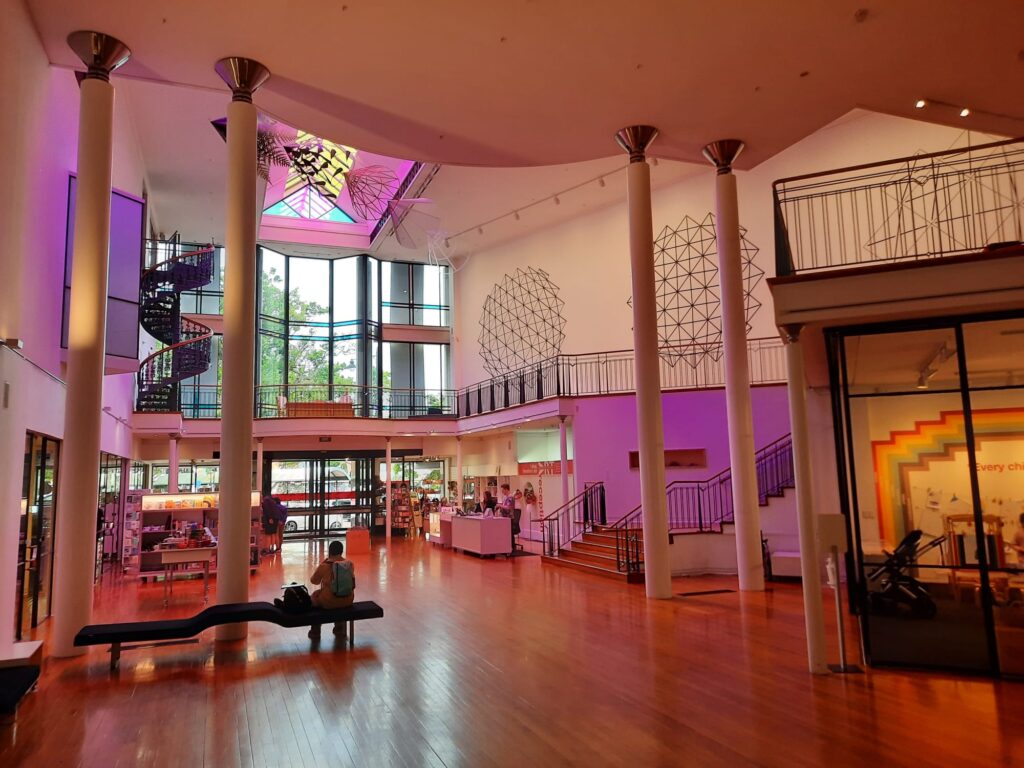
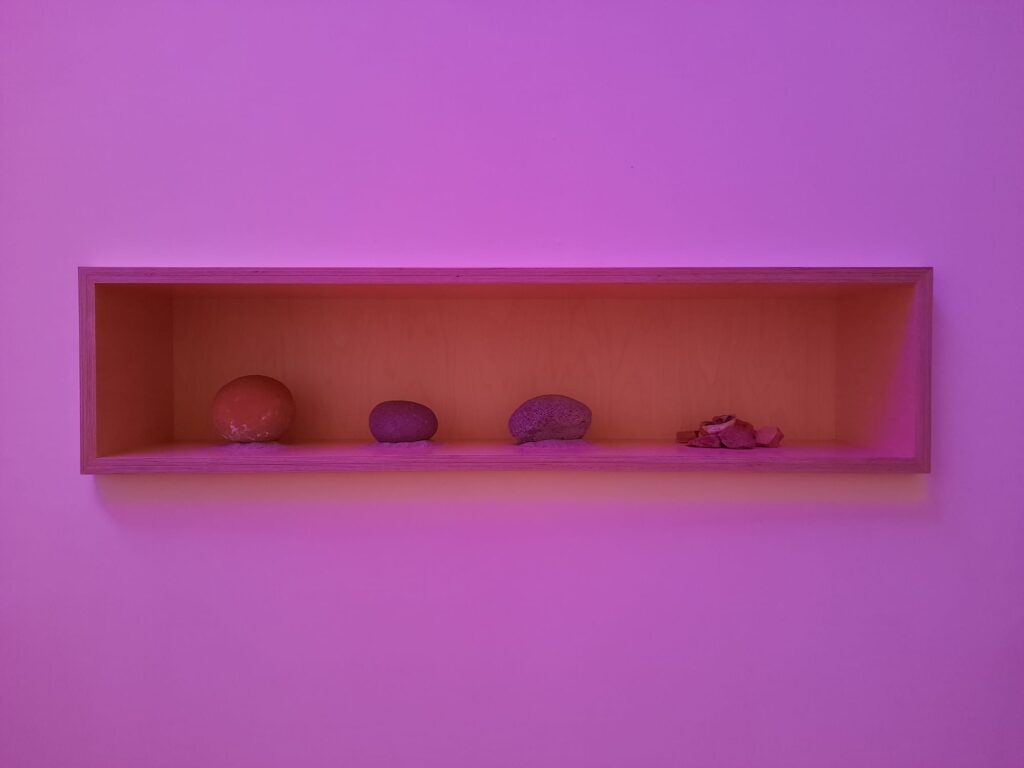
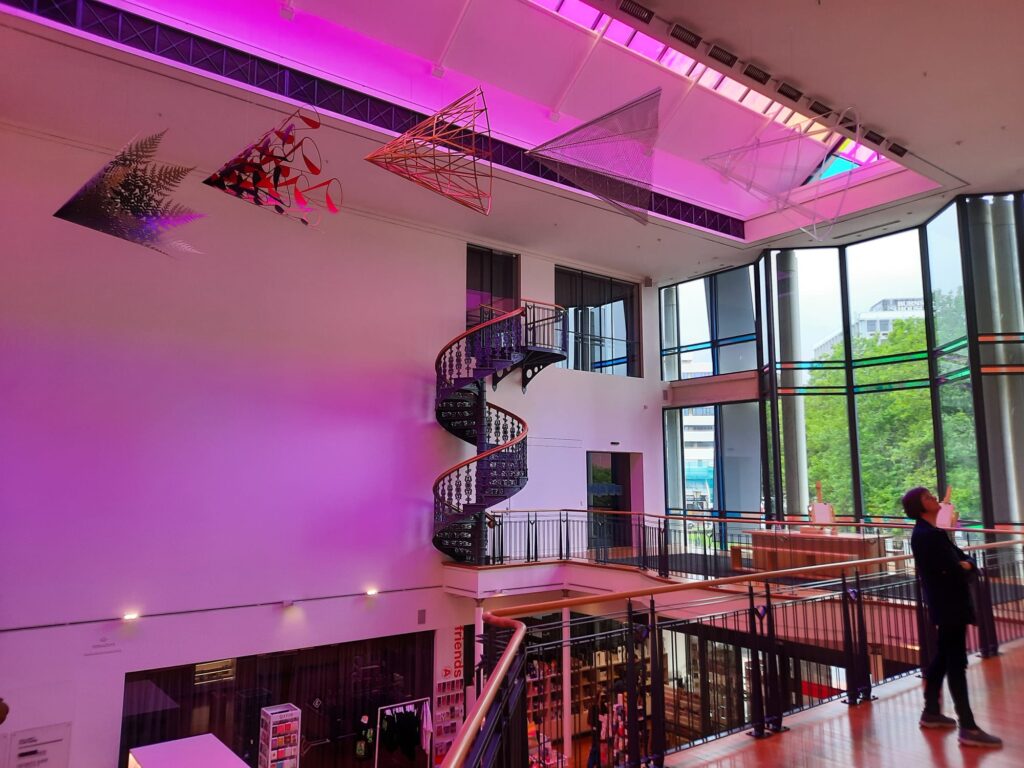
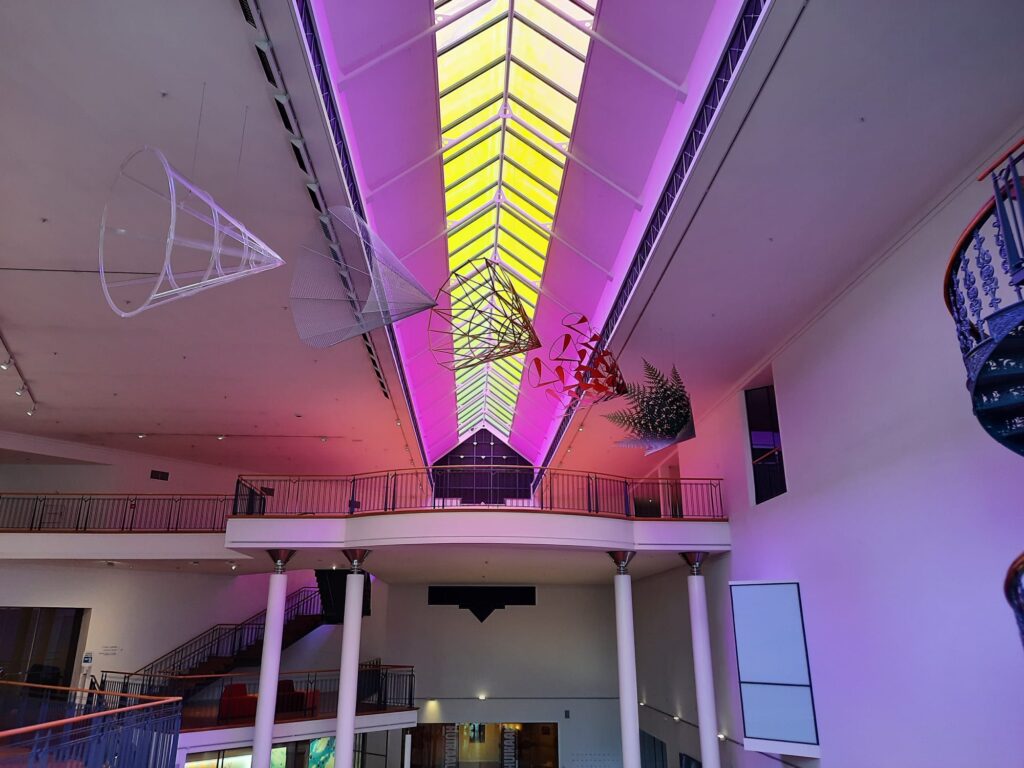

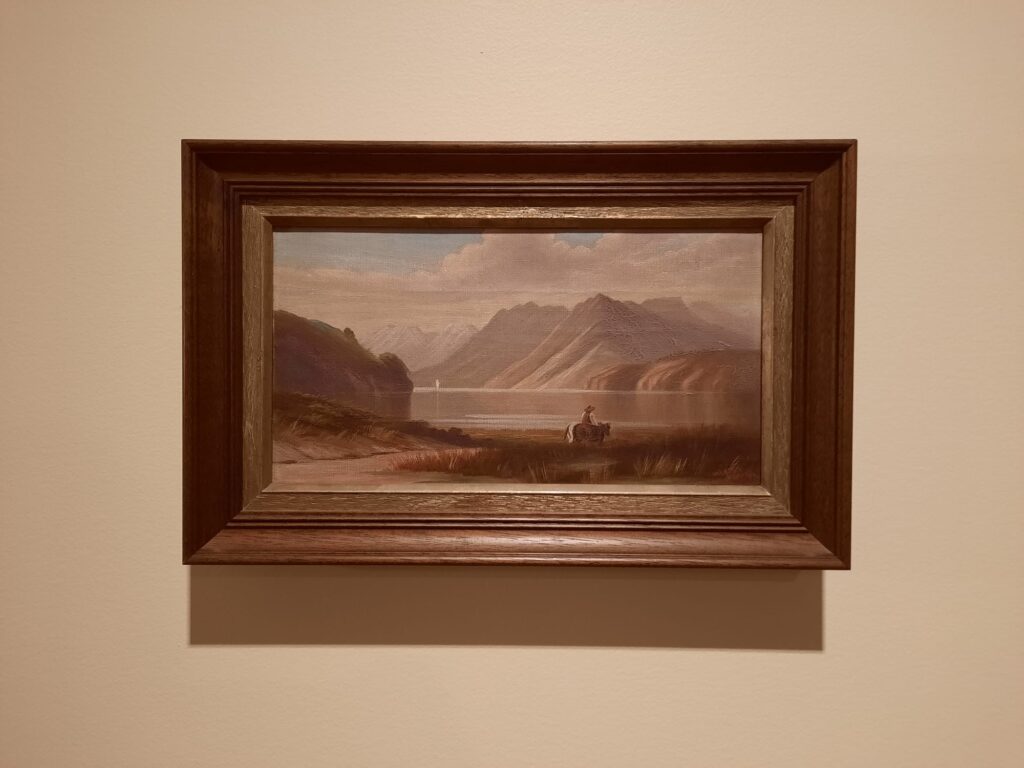
Hello Again, Dunedin Public Art Gallery
This is our third stop in Dunedin and its environs, on this particular visit to the Southern Hemisphere. We’ve already seen the refurbished Port Chalmers Maritime Museum, and the Dunedin Gasworks Museum. Between them we’ve learned about Aotearoa New Zealand’s first frozen meat shipment, first (and last) gasworks, and more. Today we’re going to talk about another first, Aotearoa New Zealand’s first public art collection. It turns out that being the gateway to a gold rush in a newly developing settler society is an excellent way to increase your city’s wealth and claim a lot of titles!
Before we begin, please let me divulge another conflict of interest (sort of). As a baby museologist, many years ago, I did an internship and had a part time job at the Dunedin Public Art Gallery. Behind the scenes I applied for funding to help digitise the collections. I also spent time as a Visitor Host, manning the galleries, answering questions, and ensuring the safety of visitors and collections So it’s an institution I’m pretty familiar with. At least in a previous incarnation. And that, dear readers, along with Toitū Otago Settlers Museum and Wellington Museum, completes the trifecta of New Zealand museums I did work experience in. Thanks for helping me complete the set!
On now to the gallery. We’re going to start, as we often do, with a quick history lesson. The Dunedin Public Art Gallery has had a lot of homes over the years, and has some important differences from other New Zealand art galleries, so it’s an interesting one. Then we’ll take a look at what’s on view, before summarising with some final thoughts. And with that brief look ahead let’s dive in now, shall we?
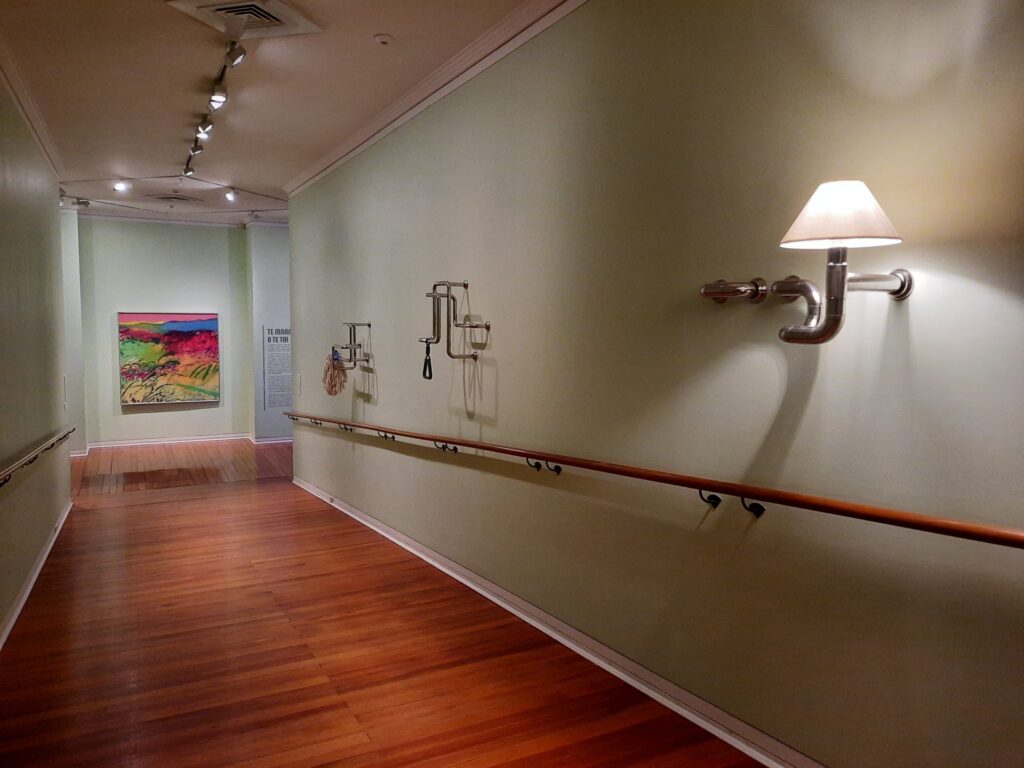
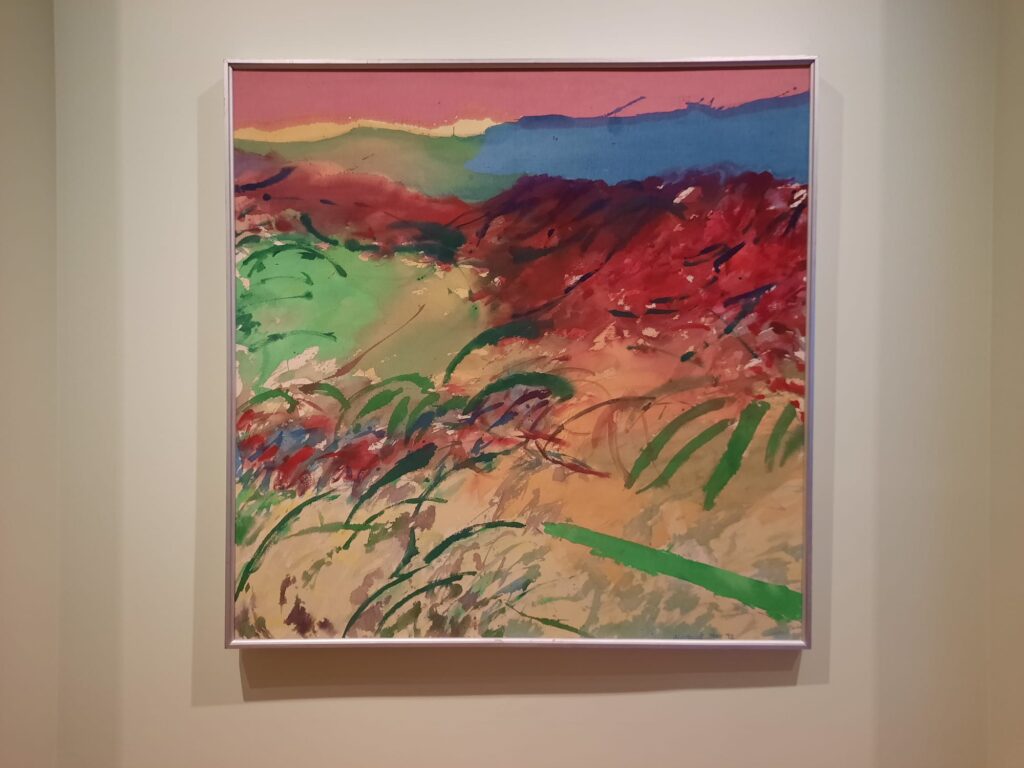
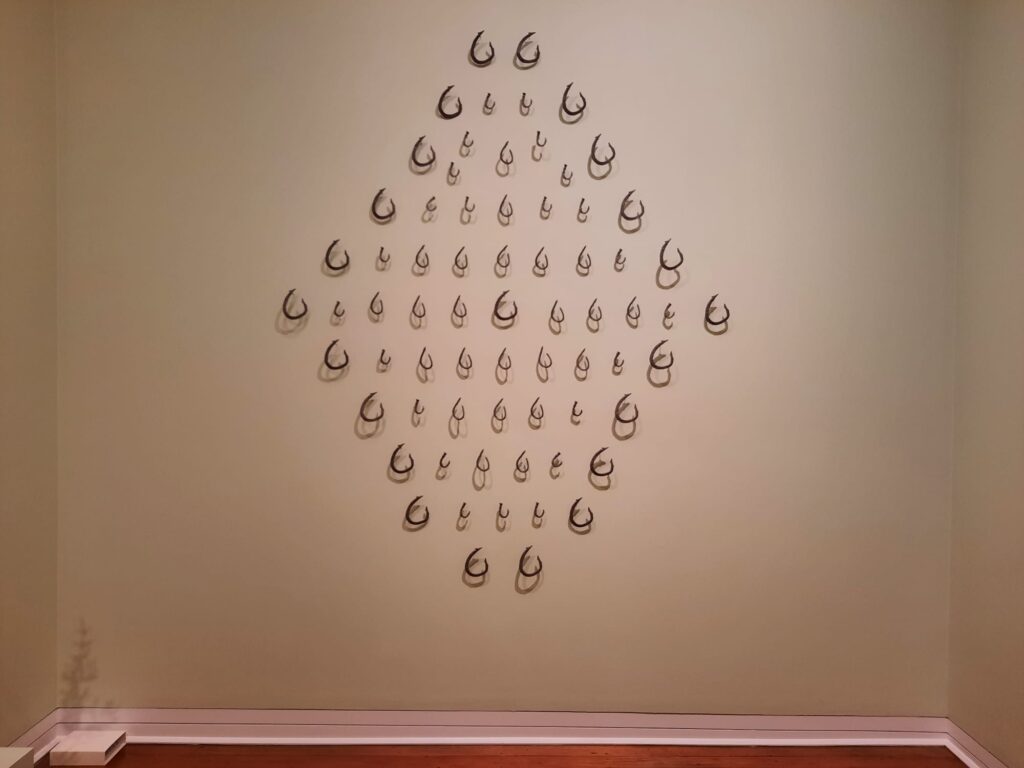

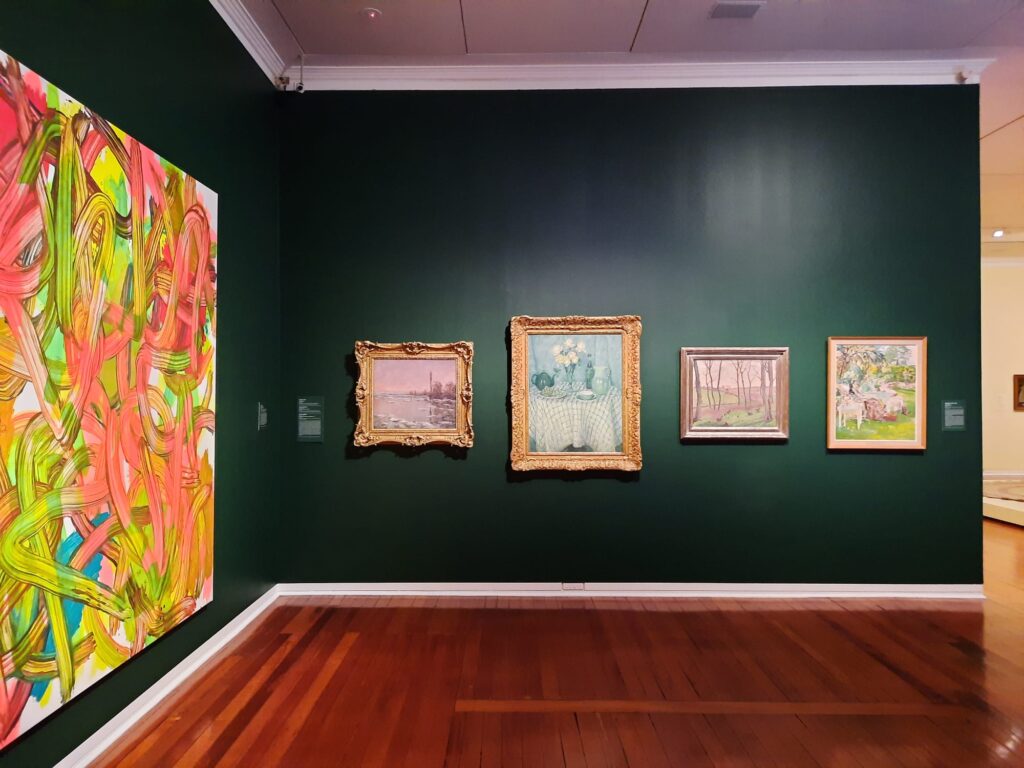
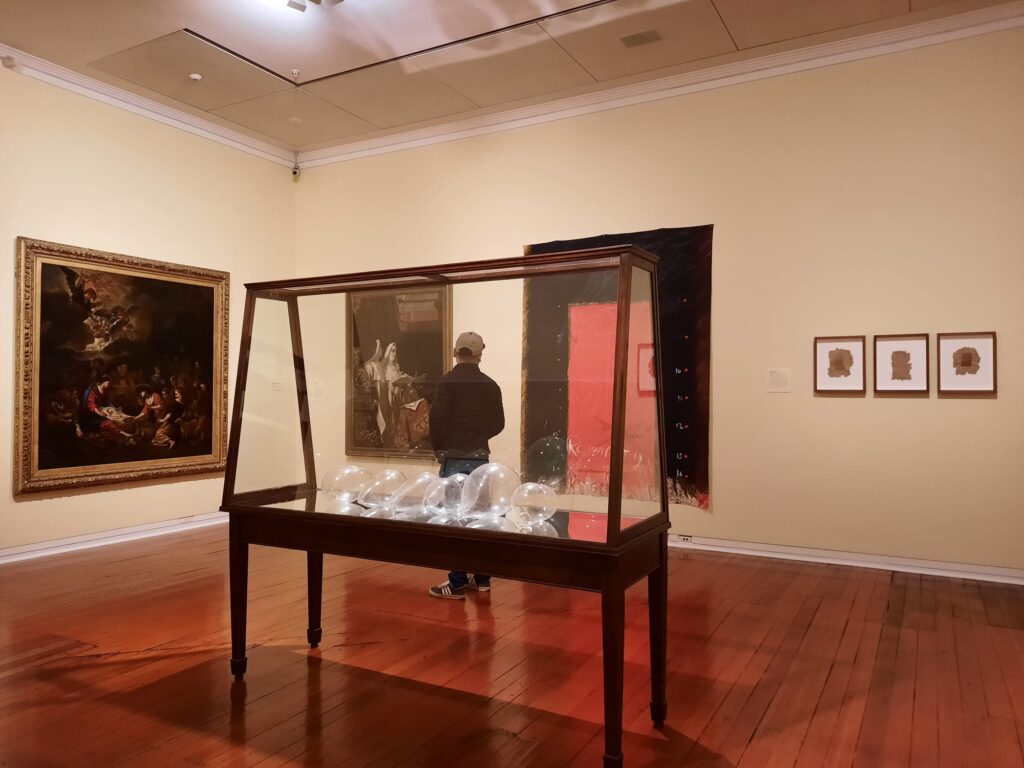
A History of Dunedin Public Art Gallery
As I was saying, Dunedin Public Art Gallery was Aotearoa New Zealand’s first public art collection. It was founded by one William Hodgkins in 1884. A painter himself, Hodgkins is perhaps more famous now as the father of artist Frances Hodgkins. A bit more on her later and in a subsequent post. Born in Liverpool in 1833, Hodgkins arrived in Dunedin around 1862, after a brief stint in Australia. It’s not clear where he learned to paint, but it is clear he became the main promoter of art in the young city of Dunedin. He organised art lessons, exhibitions, and encouraged his daughters to paint. It was under his presidency in 1881 that the Otago Art Society decided to start collecting pictures to form a national collection of works of art. Ultimately his passion for art seems to have come at the cost of professional success as a lawyer.
So there was a nascent collection, and an official attempt to create an art gallery by 1884. It originally occupied what is now a gallery of Tuhura Otago Museum. It relocated to a space in the Octagon (Dunedin’s central public space) in 1889-90, before moving back to an annex at Otago Museum. In 1907 it moved to a purpose-built building which is now part of Toitū Otago Settlers Museum. Then another move in 1927 to a building which had been part of the 1925–26 New Zealand and South Seas International Exhibition. It stayed in this building for several decades: I remember visiting here as a child. And then in 1997 the current version of the Dunedin Public Art Gallery opened, back in the Octagon in a refurbished former department store. That’s almost a century after the death of its early champion, William Hodgkins, in 1898.
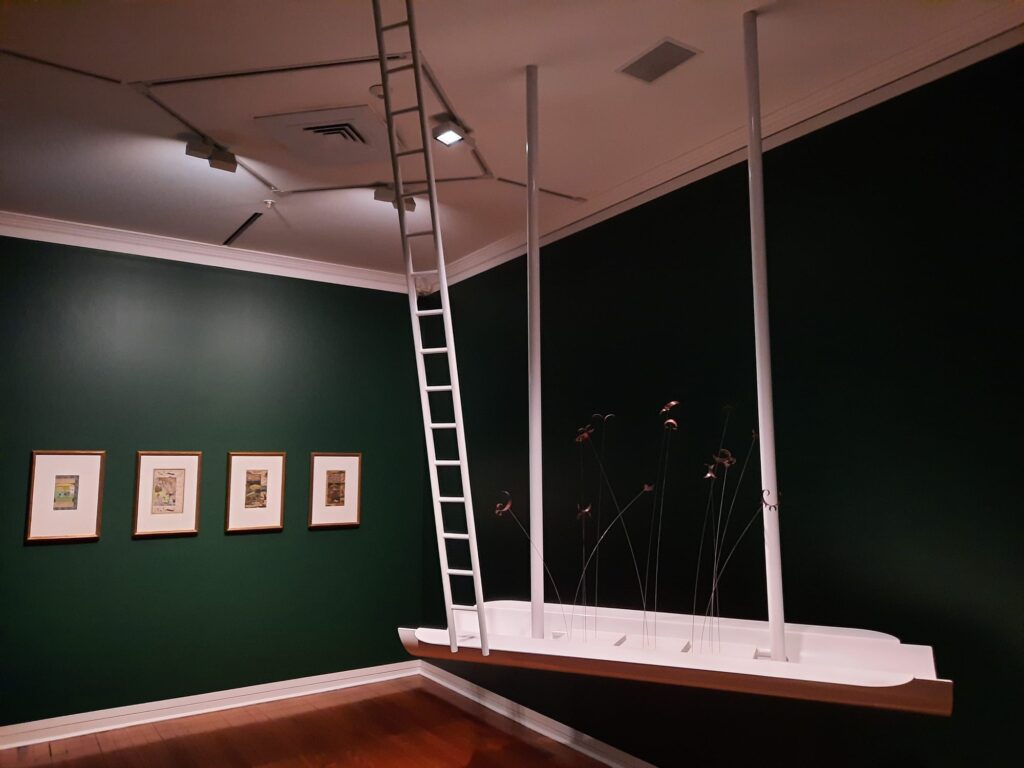
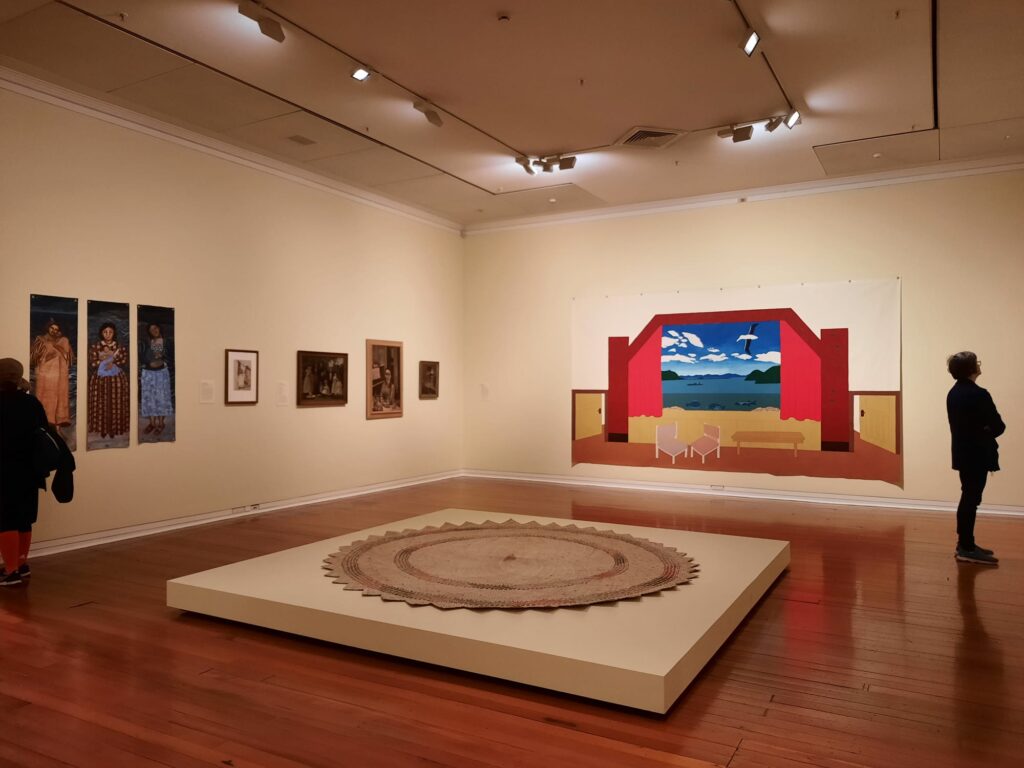
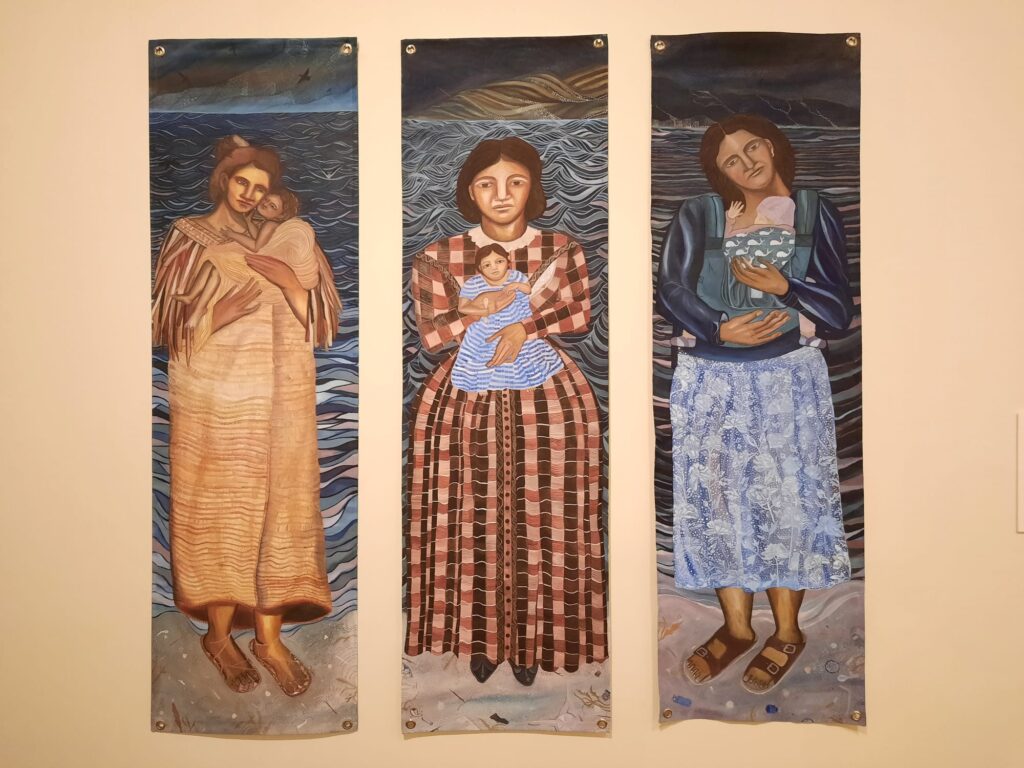
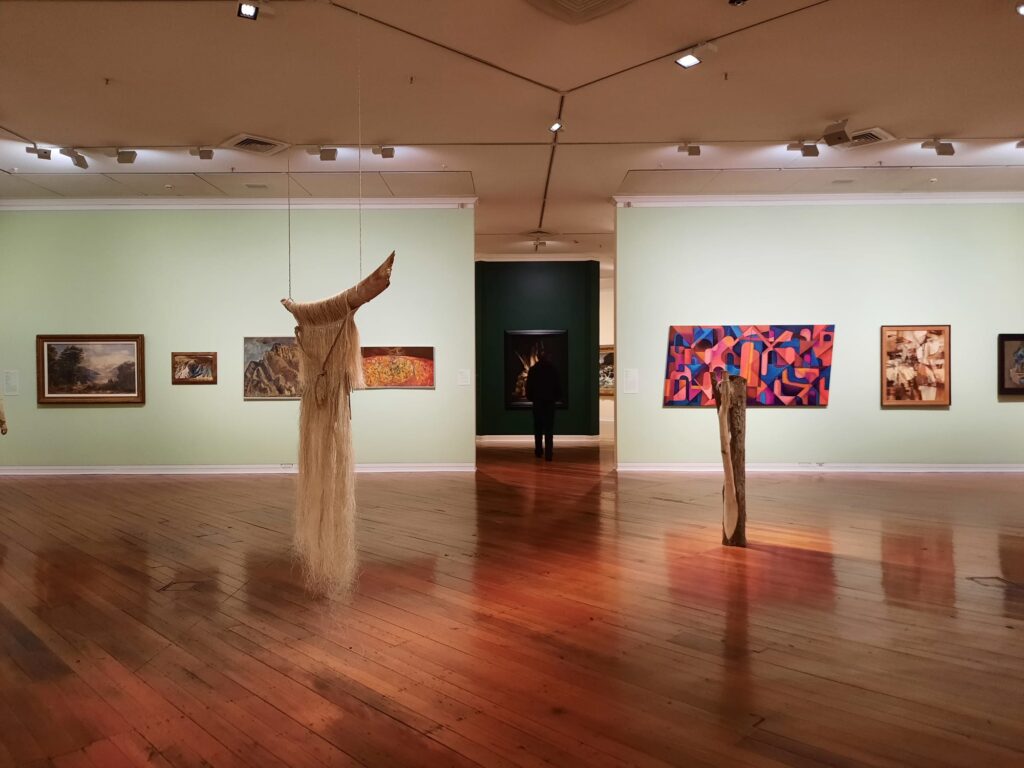
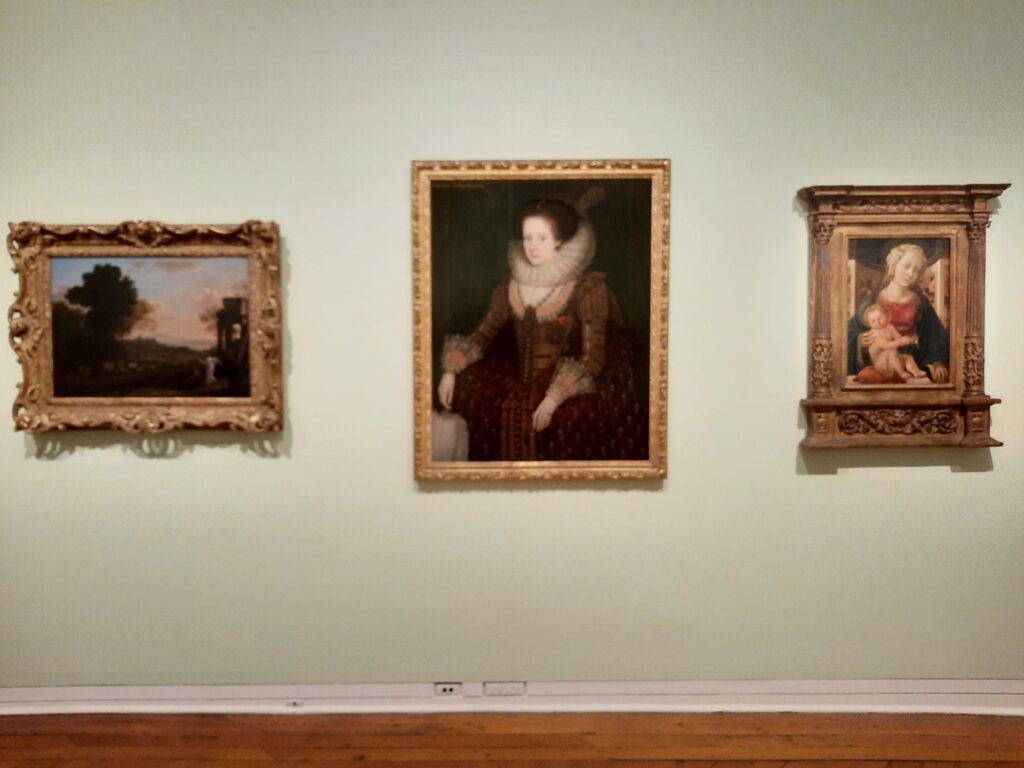
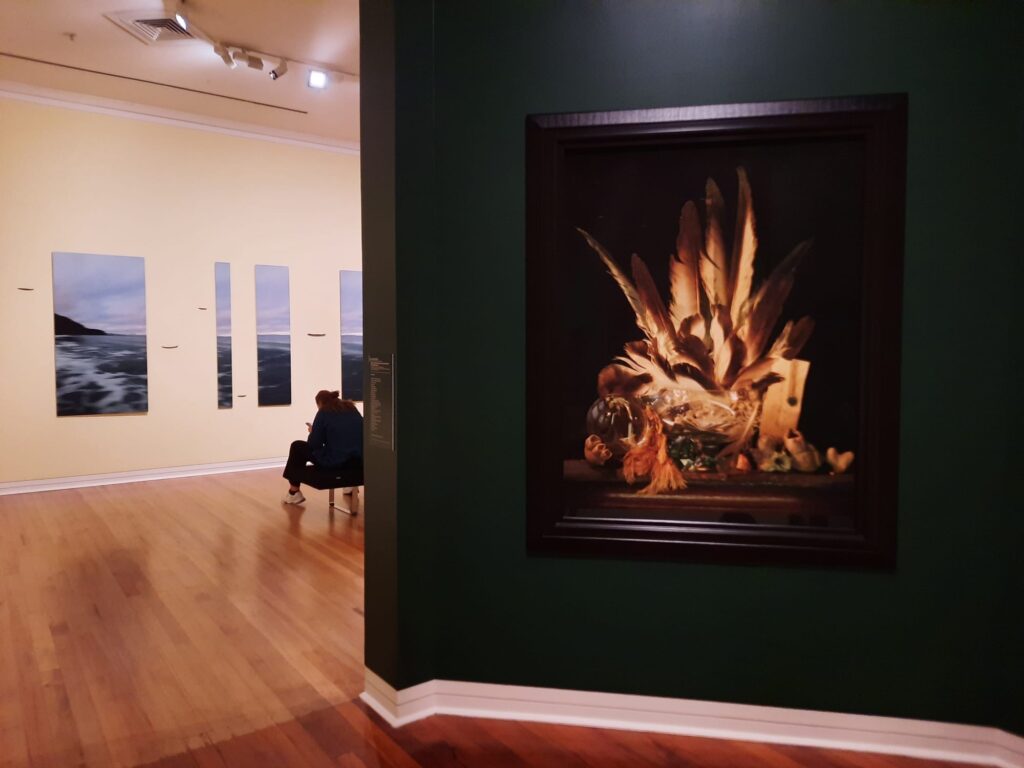
The Gallery Collections
Dunedin Public Art Gallery has rich holdings of art by New Zealand and international artists. The collection, like most art museums, is a mixture of purchases and donations over the years. One key difference between this and other metropolitan art museums in Aotearoa New Zealand is that the gallery, from the 1920s, focused on collecting applied or decorative arts as well as ‘fine art’. In this, it followed the model of the V&A in London with its relatively broad definition of what art is. So the gallery frequently exhibits furniture and ceramics, for instance, alongside paintings and sculpture.
The current exhibition of the gallery’s permanent collection is Huikaau: Where Currents Meet. It has several interesting aims: to look at the past, present and future; to bring out stories and ideas from the collection, to welcome new arrivals, and to bring Māori and indigenous perspectives to the fore. It does this by juxtaposing works in interesting ways, displaying bilingual texts, disrupting conventions, and more. Works loaned from the Paemanu Art Collection intermingle with permanent collection objects, introducing contemporary works by local Kāi Tahu artists to new audiences.
This is a new permanent display since the last time I was here. I was pleased to see so many old favourites hung with new neighbours or in unexpected pairings. One of the strengths of the Dunedin Public Art Gallery’s collection is that it’s quite a good capsule collection of art history. There aren’t many Old Masters or Impressionists, for instance, but there might be one Salvator Rosa, one Claude Lorraine, one Jan van Goyen, one Thomas Gainsborough, one Claude Monet, one Stanley Spencer. What I think this means is that, firstly, the art-consuming public in Dunedin get to see some pretty interesting stuff. What it also means is that works which might be overlooked in bigger collections in Europe or the US get pride of place. And they’re often more interesting.
But the holdings of New Zealand artists are equally, or rather more, important. This is a mixture of New Zealand-based artists, particularly in the early days, giving way to New Zealand-born artists. And again there are old favourite works by Petrus Van der Velden, C.F. Goldie, Colin McCahon, Rita Angus, Ralph Hotere, and so on.
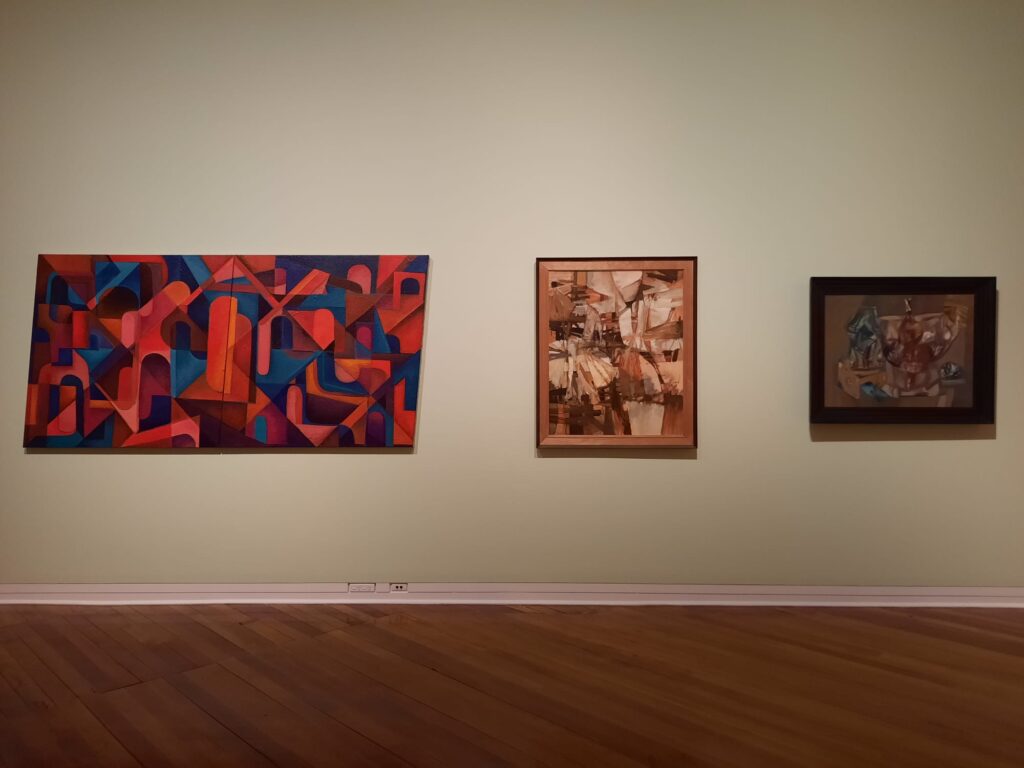
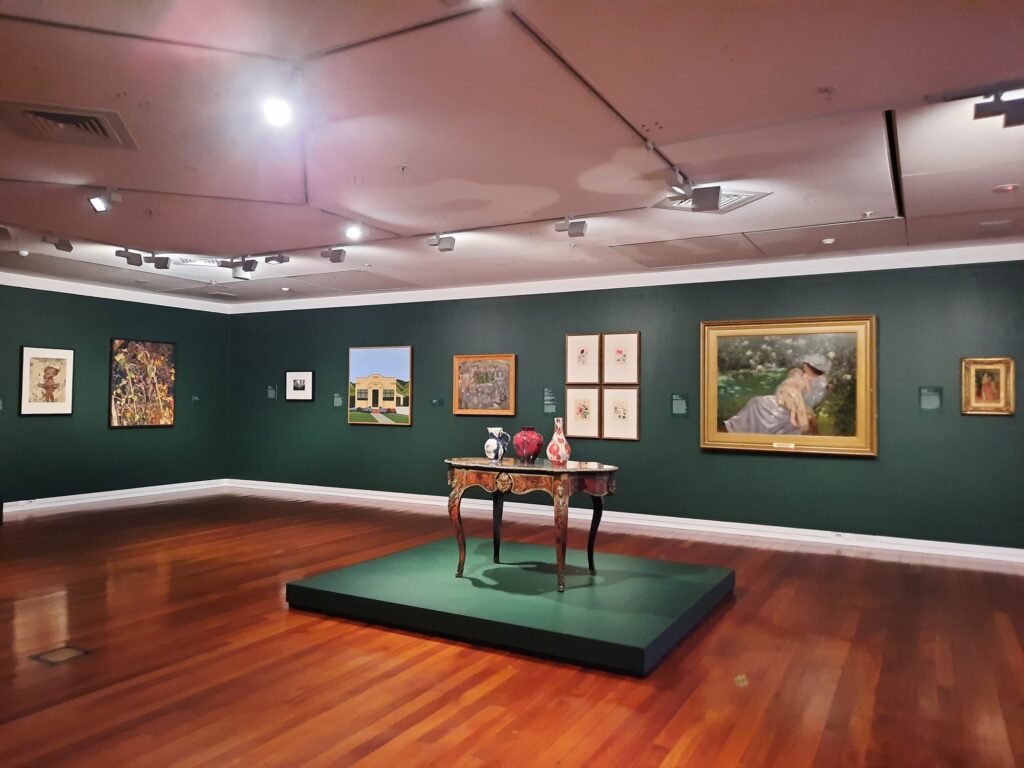
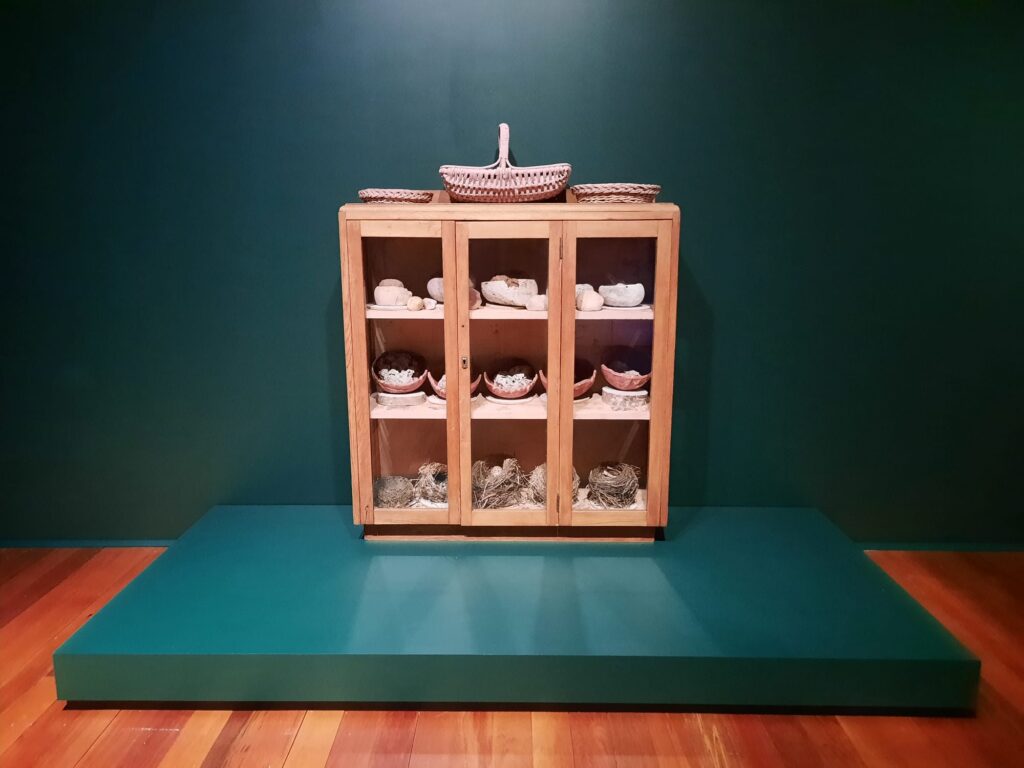
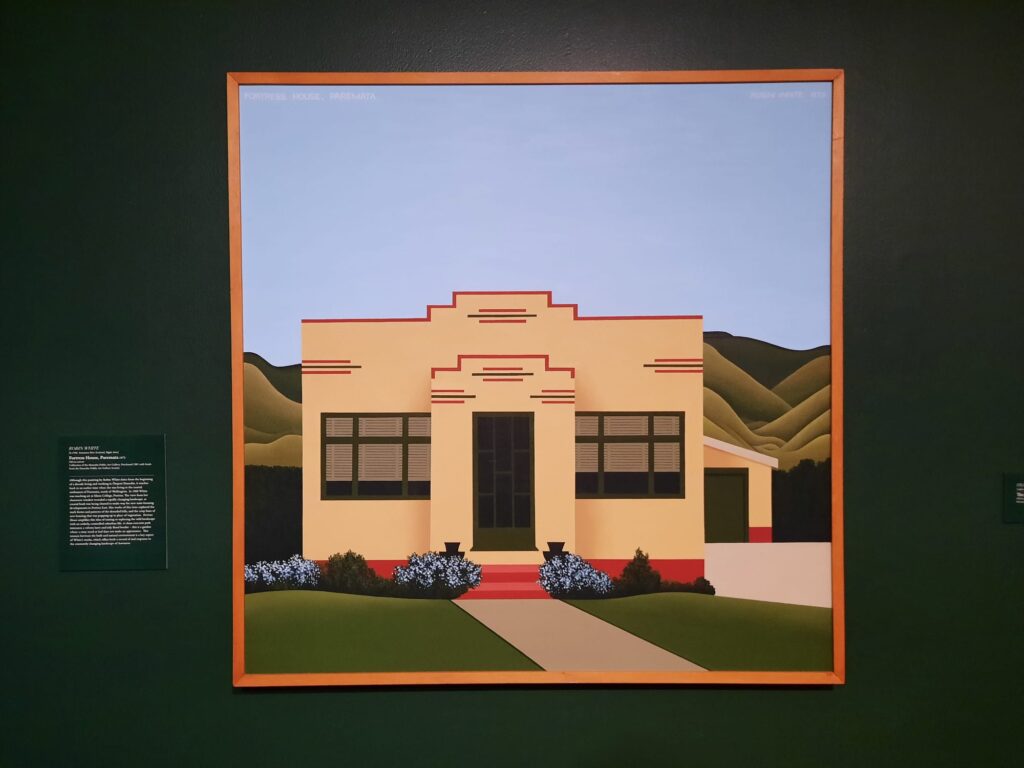
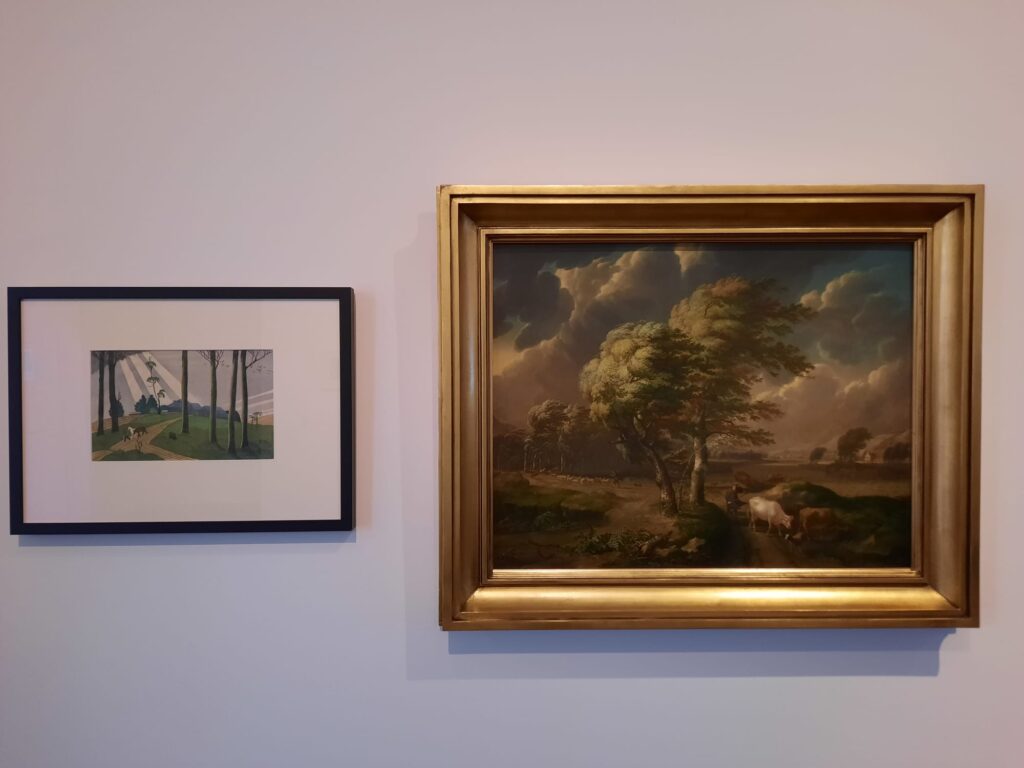
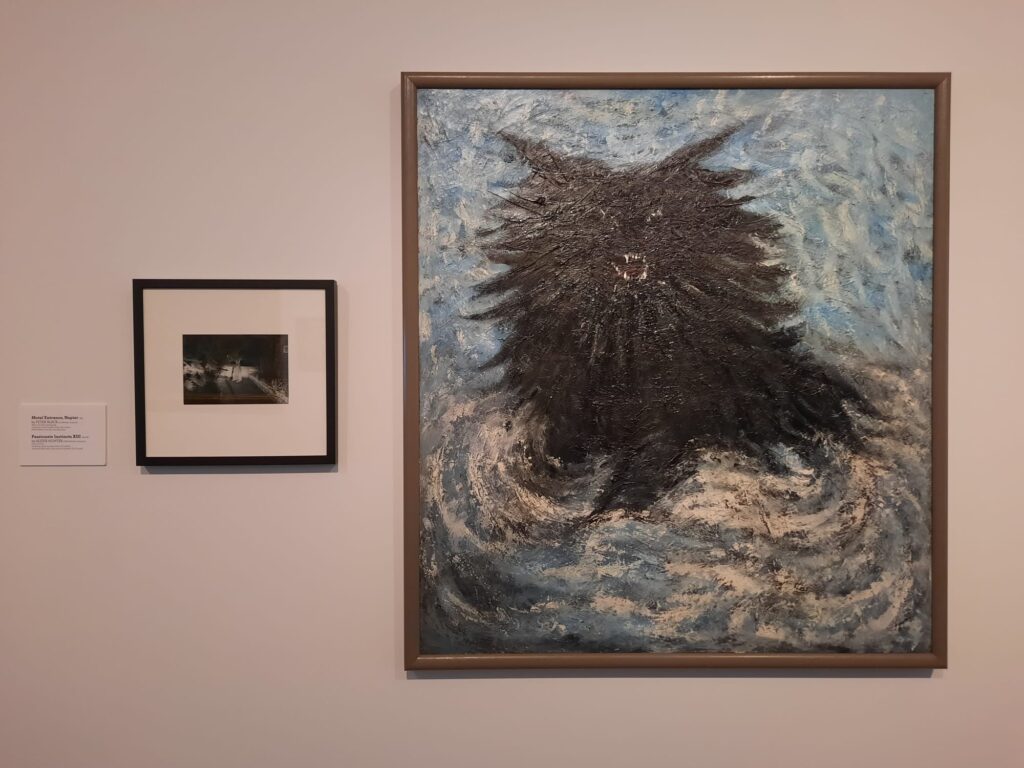
Temporary Exhibitions
One of the strengths of Dunedin Public Art Gallery is that it has a lot of different gallery spaces, and typically uses them to house several temporary exhibitions at once. This will often be a mix of local artists, those from further afield, and curated group exhibitions. And such it is on this occasion. I’m not going to to into all of them in detail, but will rather pick out a couple of highlights.
I’m going to start with an artwork that greets visitors as they enter the gallery. That is Light Interference (Spectral Transmission) by Rebecca Baumann. This site-specific commission uses dichoic film to transmit and reflect different colours based on the angle and strength of the sunlight entering through the gallery’s skylight and front windows. When I visited I was washed in a slightly surreal colour, like being under UV light. It reminded me a bit of Olafur Eliasson, for example a work I saw as part of a Tate exhibition.
Next up is Xoë Hall’s Bloodline – the return. Hall’s murals can be found in many public spaces, there was actually another one covering a hoarding in the Octagon when I was in Dunedin. Hall uses bright colours and Māori ancestral figures and stories. It’s got all the vibrancy of street art, while also conveying complex themes and narratives. It’s also a really great use of an otherwise liminal and slightly awkward space.
And finally there’s Déjà Vu. This is one of those curated group exhibitions. It is in the Whānau [or family] Gallery, and is a perfect jumping off point for conversations about art. Déjà Vu pairs items from the gallery’s collection, for example two images of polar bears, or dogs, or trees. The subject matter may connect them, but the pairings diverge in terms of style, media, period, etc. What better way to explore what art can be, and how there is no ‘right’ way to depict something?
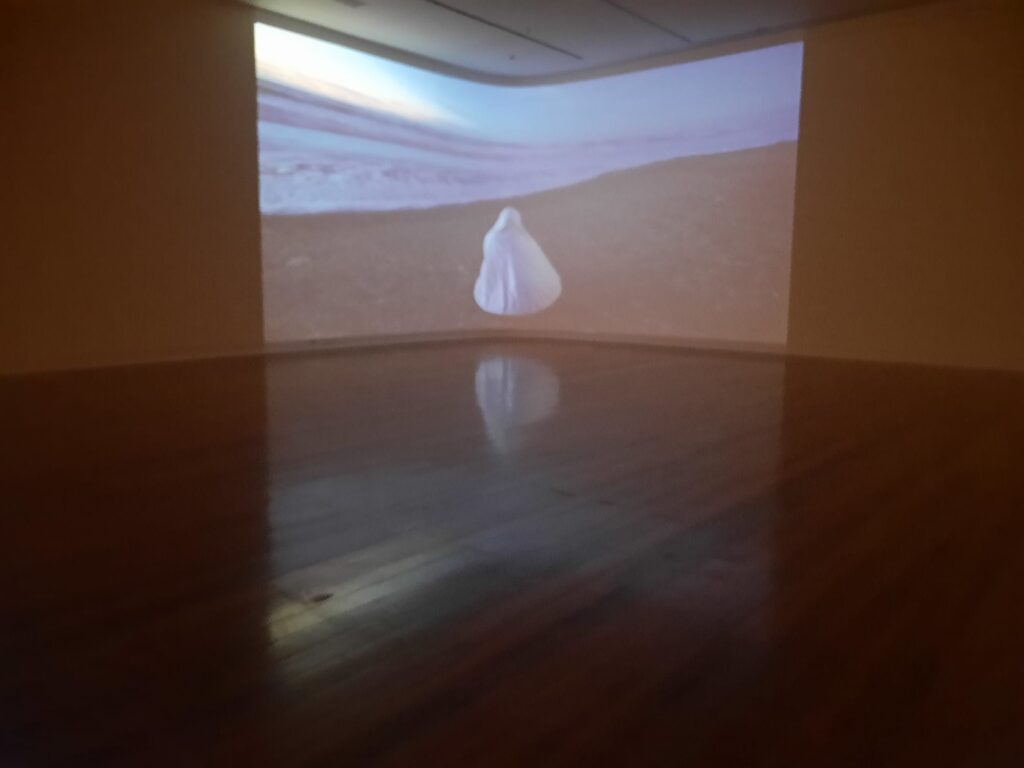
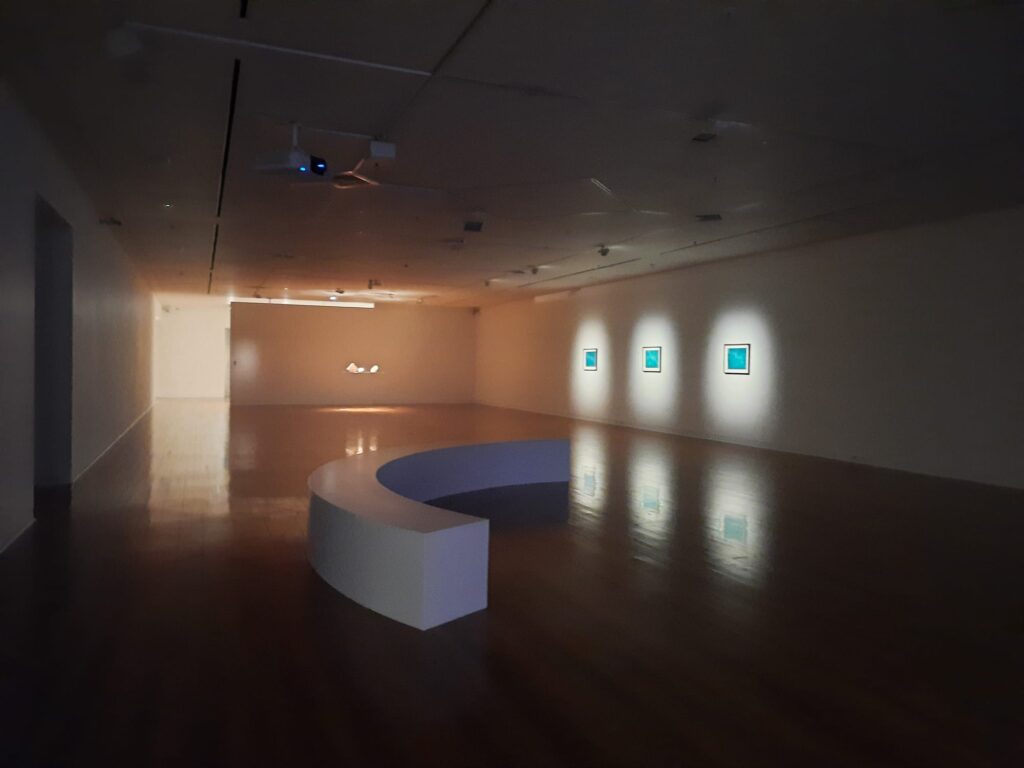
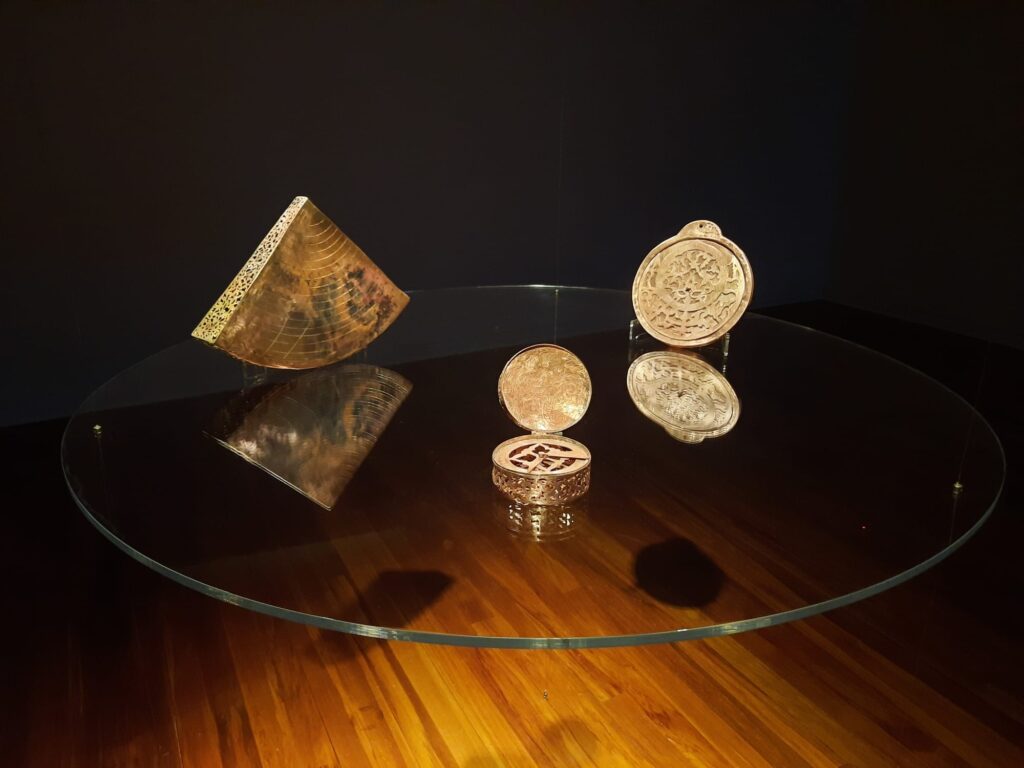

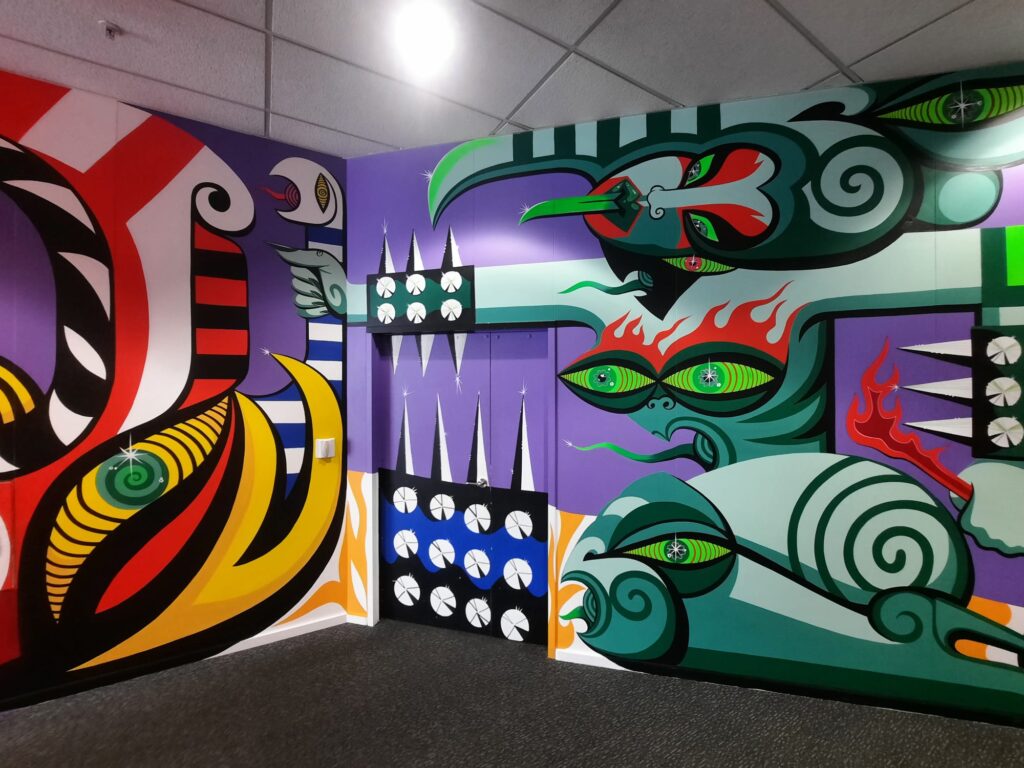
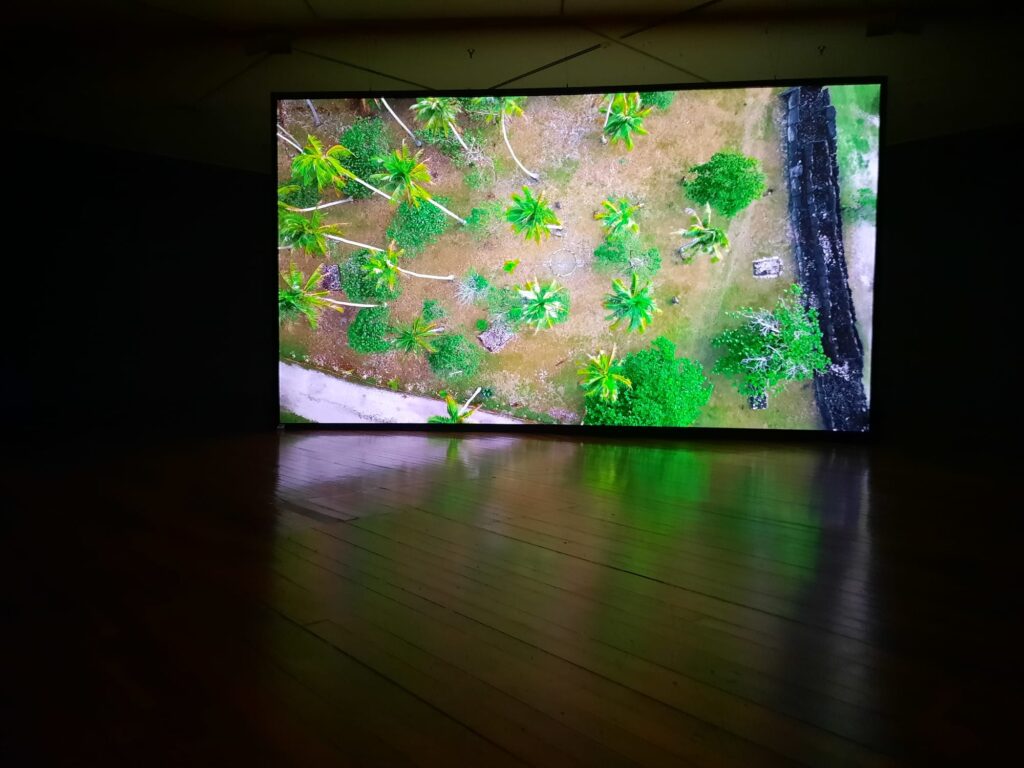
Visiting the Dunedin Public Art Gallery
And that, in a nutshell, was my experience revisiting the Dunedin Public Art Gallery. Or almost: I’m going to go into more detail about one exhibition in my next post. Groundbreakers says something interesting about that early Dunedin art scene, and I would like some more space to explore it.
But I hope you have a good sense of what the gallery is all about. For me, who was once so familiar with it, it was interesting to see what had stayed the same and what was new in the years I’d been away. The similarities are positive. It’s still a great space in the heart of the city, where residents and visitors can see art for free. A rich tapestry of changing temporary exhibitions means there’s always something new to encounter. And it’s backed up by an excellent permanent collection where you can learn the canon of art history but also see what’s important in art closer to home.
The differences are also revealing. Since I was last here, for instance, there’s far more bilingual English and Māori text. I think this is an excellent statement of intent as well as being inclusive of those who speak either of Aotearoa New Zealand’s official written languages (I phrase it like that because New Zealand Sign Language is also an official language). There’s also a reasonably prominent Pōhatu Mauri, or affirmation of life force, as you head up the main staircase. This consists of stones and pigment from significant places, gifted by local hapū and iwi and signifying support and protection. The Pōhatu Mauri also provide an opportunity for contemplation and inspiration: fitting within an art gallery space. I really noticed and appreciated these inroads to making biculturalism part of the gallery’s everyday practice.
Whether you’re a resident or visitor, the Dunedin Public Art Gallery is a great resource. And as it’s free, you can choose between taking your time or popping in and out to get a quick fix of art. I look forward to visiting again when I’m next in Dunedin. It’s nice to know I can keep coming back to this space which is so rich in art and history and yet always changing and looking towards the future.
Salterton Arts Review’s rating: 4/5
Déjà Vu on until 8 June 2025
Rebecca Baumann: Light Interference (Spectral Transmission) and Xoë Hall: Bloodline – the return on until 30 November 2025
Huikaau on until 31 May 2026
Trending
If you see this after your page is loaded completely, leafletJS files are missing.


wow – what a diverse and high-quality collection! I like their use of coloured walls as backgrounds for some of the artworks. Nice job NZ!
It’s actually the very place I fell in love with art, when I saw a touring exhibition from the Tate back in something like 2003. But a very nice permanent collection to grow up with as well!